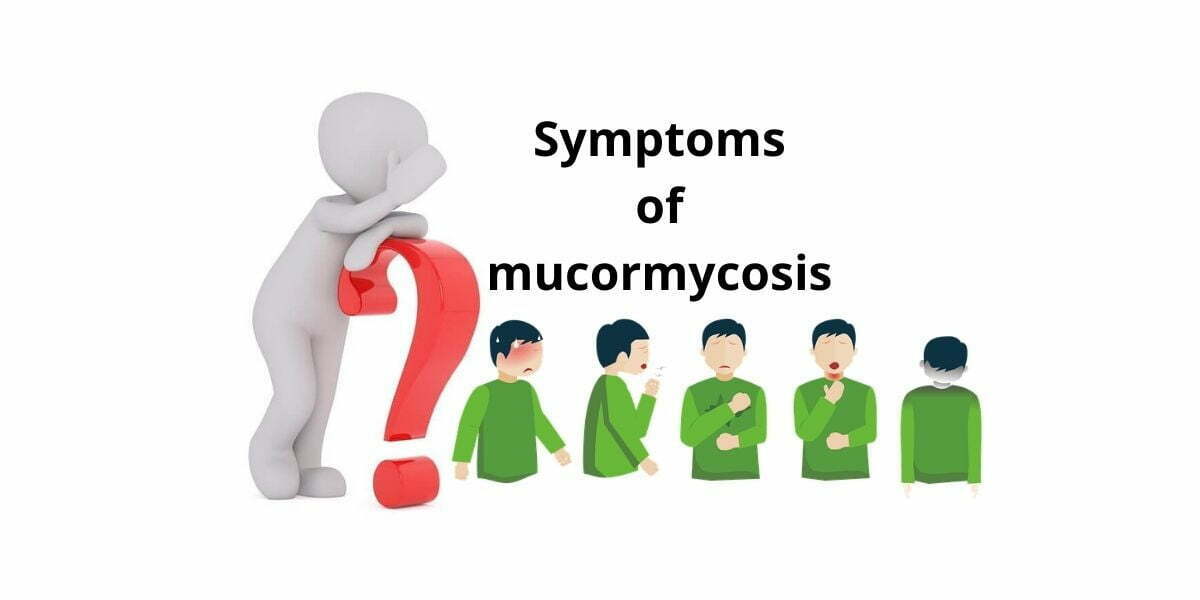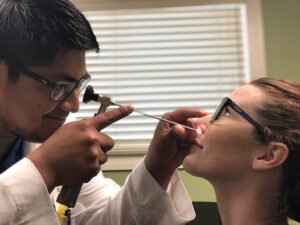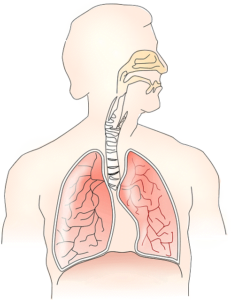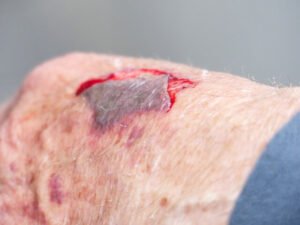Symptoms of mucormycosis -“black fungus” mystery
 Posted On
Posted On
Contents
- What is mucormycosis or “black fungus”?
- What are the symptoms of mucormycosis?
- 1. Rhino-Orbito-Cerebral Mucormycosis (ROCM)
- 2. Pulmonary mucormycosis
- 3. Cutaneous mucormycosis
- 4. Gastrointestinal mucormycosis
- 5. Disseminated mucormycosis
- Who gets affected by black fungus?
- Can mucormycosis happen to healthy person?
- How serious is black fungus?
- Is there any treatment for black fungus?
- Conclusion
The country is still grappling with the coronavirus crisis. Now, a new challenge of mucormycosis has been added to the healthcare system. Because the symptoms of mucormycosis have been seen in various states of India.
As per data, the incidence of mucormycosis is rising globally, but currently, it is much higher in India. Till now, over 7000 people have been infected, and over 200 people are dead from this disease in India.
So, Mucormycosis is a growing concern. It is important to know how we can identify this disease.
This article will give you information about this dangerous disease and symptoms of mucormycosis or “Black fungus.” Let’s start the discussion.
What is mucormycosis or “black fungus”?
Mucormycosis or “Black fungus” is a deep opportunistic fungal infection caused by mucormycetes that belong to Mucorales fungal family. Previously, it was also known as “Zygomycosis.”
Mucormycetes fungi are generally present in your environment, especially in soil, decay matters like rotten vegetables, fruits, leaves, etc.

These fungi are suspended in the air and then transmit while breathing.
This disease has a close link to diabetes and immunocompromised conditions. It means it does not happen to everyone.

It generally happens when your immune system goes down during cancer treatment, steroid therapy, untreated diabetes, or any immunocompromised conditions. In these circumstances, these fungi get an opportunity to grow or multiply in your body.
Therefore, it is also called opportunistic fungal infection.
What are the symptoms of mucormycosis?
You may get infected through unhygienic environmental conditions. According to CDC, if you are exposed to this fungus, you may develop to start some signs and symptoms.
The symptoms of mucormycosis depend on the area of your body where the fungus is growing. It is just like fast-spreading cancer, which infects many organs –
1. Rhino-Orbito-Cerebral Mucormycosis (ROCM)
Rhino (nose) + Orbito (eye) + cerebral (brain) mucormycosis
It is the most common form of mucormycosis. Because it generally travels through your nose and enters into sinusoids.

The symptoms can start from the simple obstruction of the nose. Later, you may develop –
- Fever
- One-sided facial swelling
- Headache
- Nasal discharge and nasal ulceration
- Bloody mucus from the nose
- Toothache
- Loosening of teeth
When the blood flow gets restricted in these areas, the skin becomes discoloured or blackening over the nose. This is why it is called Black Fungus.

Credit – Ran Yuping et al., CC BY 3.0 <https://creativecommons.org/licenses/by/3.0>, via Wikimedia Commons
The infection may spread to your eyes. And you may have symptoms like –
- Eye pain and swelling
- Blurred vision
- Loss of vision
- Ophthalmoplegia (paralysis of eye muscles)
- Proptosis (bulging of the eyes)
Mucormycosis infection can extend to your brain by penetrating into blood vessels. It can alter your mental status like confusion, loss of alertness, memory loss, etc.
Diabetes can be the leading risk factor of ROCM cases because it is often seen in uncontrolled diabetes and diabetic ketoacidosis.
You may also be at risk if you have chronic kidney disease, organ transplantation, and taking corticosteroid therapy.
2. Pulmonary mucormycosis
If this infection started spreading to your lungs, then you may get symptoms like –

- High fever
- Persistent cough (cough last longer than 8 weeks)
- Pleuritic chest pain (sudden and intense sharp, stabbing, or burning pain in the chest while breathing)
- Dyspnoea (difficulty in breathing)
- Haemoptysis (coughing of blood)
- Shortness of breath
The main risk factors of pulmonary mucormycosis are blood cancer, solid organ transplant, diabetes mellitus, and kidney disease.
So, you may be at high risk if you have blood cancer, diabetes mellitus, and kidney disease. Moreover, the infection can develop if you have had an organ transplant.
3. Cutaneous mucormycosis
The primary risk factor of cutaneous mucormycosis is trauma. It means you may be more likely to have an infection if you are exposed to skin injury, wound problem, motor vehicle accident, burns, etc.

It can be seen in surgery, unsanitary healthcare facilities, contaminated dressings, and animal bites.
You may experience like –
- blisters or ulcers on the skin surface
- Infected area may turn into black skin
- pain
- warmth
- excessive redness
- swelling around a wound
4. Gastrointestinal mucormycosis
If this infection spreads to your gastrointestinal area, that would call Gastrointestinal mucormycosis. It can be seen in malnutrition patients, low birth weight infants, and patients undergoing peritoneal dialysis.
If you are suffering from these problems, then you may be more susceptible to this infection. And you may present symptoms like –

- Abdominal pain
- Gastrointestinal bleeding
- Abdominal bloating
- Diarrhoea
- Nausea and vomiting
5. Disseminated mucormycosis
The mucormycosis infection may enter your blood vessels. As a result, the infection can circulate in many organs like the lungs, brain, heart, sinuses, liver, and kidney.
So, it infects multi-organs. It is such a dangerous condition which difficult to save the patient life.
It can be challenging to recognize the symptoms in this condition because the patient can be in other medical conditions. So, the symptoms may overlap.
Who gets affected by black fungus?
Currently, this fungal infection is increasing among COVID patients. Because coronavirus itself an immunity concern problem. Along with that, various comorbid conditions and drug therapy are responsible for causing mucormycosis.
|
COVID-19 |
Decrease immunity |
High chance to develop mucormycosis |
|
Uncontrolled diabetes |
Decrease immunity |
|
|
Decrease immunity |
||
|
Other immunocompromised medical condition |
Decrease immunity |
So, you may be at more risk of black fungus or mucormycosis if
- you have a severe covid infection
- you have an uncontrolled diabetes
- you are on steroids
- you are on iron chelator medicine like deferoxamine
- you prolonged stay in the ICU or ventilator
- you have had an organ transplant
- you are having other immunocompromised medical conditions like HIV, chronic kidney disease, and cancer.
- You use an unhygienic humidifier
Can mucormycosis happen to healthy person?
Mucormycosis does not affect the normal healthy individual or immunocompetent (normal immune response) person. It means you do not need to worry if
- you are healthy
- you are non-diabetic
- you are not taking steroid
- you have mild covid
- you are not prolonged ICU or hospitalized
- you do not have an immunocompromised condition
How serious is black fungus?
If you get infected from coronavirus, then there is a 96% chance that you will not die. But if you get infected with mucormycosis or black fungus, there is only a 50% chance of survival.
According to CDC, the death rate of mucormycosis is 54%. In other words, if 10 people are exposed to this infection, then 5 people will come out of it alive.
So, you can understand how much it is a dangerous disease. It is a really highly lethal fungal infection.
The mortality rate depends on patient condition, types of fungal infection, and body site affected.
If you get an infection in the sinus area, there is a 46% mortality rate. Whereas if you get fungus in the lungs, then the mortality rate goes up to 76%.
But it becomes more severe or fatal in disseminated mucormycosis. In this case, the mortality rate is 96%.
Is there any treatment for black fungus?
The treatment of black fungus may depend on the severity of the disease. If it detects in the early stage, then the prognosis may better. But in the late stage, the death rate may go up 60 to 90%.
The liposomal Amphotericin B is the drug of choice for mucormycosis. It gives in 1.5 mg/kg/d to 5 mg/kg/d dose through injection for 4 to 6 weeks. Along with that, other antifungal medicines like Posaconazole or isavuconazole may be given as add-on therapy.
Surgery is the last option, which needs the removal of the infected tissue from your body.
So, it is better to prevent fungal infection because prevention is better than cure. You need to do –
- Control your diabetes.
- Avoid excess use of steroids. But do not stop until the doctor advised.
- Use mask at the construction site.
- Cautious while handling plants.
- Increase intake of water.
- Make proper hygiene.
- Go for early diagnosis if symptoms are detected.
Conclusion
Mucormycosis is a disease of immunocompromised condition. It is not a new disease.
Currently, mucormycosis is in the limelight due to the coronavirus crisis. Because COVID provides favourable environmental conditions and opportunities for fungus to grow.
It is highly lethal for severe COVID patients with having comorbid conditions.
But the good news is that this fungal infection rarely happens. You do not need to worry if you are a healthy or disease-free person.
You should approach your doctor if you found any symptoms of mucormycosis.
I hope you have acquired some new information today from this post (symptoms of mucormycosis). If you have found this post informative. Please share it on social media.
Sources –
1. Hariprasath Prakash et al. Global Epidemiology of Mucormycosis. J Fungi (Basel).2019 Mar; 5(1): 26.
https://www.ncbi.nlm.nih.gov/pmc/articles/PMC6462913/
2. CDC (Centers for disease control and prevention). Mucormycosis
https://www.cdc.gov/fungal/diseases/mucormycosis/definition.html
3. Jorge L. Hernández et al. Mucormycosis. 2021
https://www.ncbi.nlm.nih.gov/books/NBK544364/



Sbobet Mobile
Having read this I believed it was really informative.
I appreciate you taking the time and effort to put this content together.
I once again find myself spending a significant amount of time both reading and commenting.
But so what, it was still worthwhile!